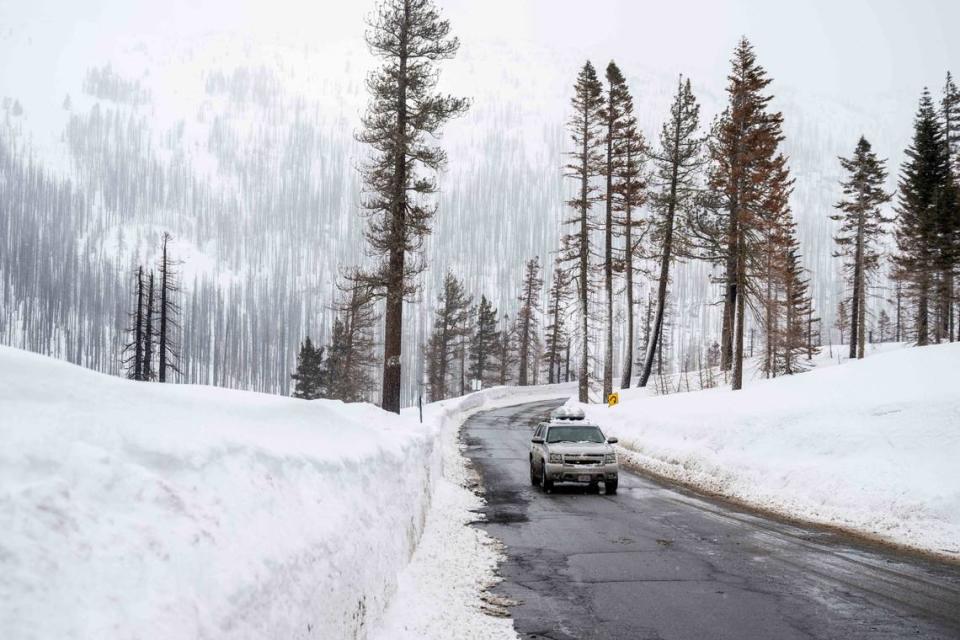What exactly is a blizzard? How is this California snow storm different from the last?
The biggest storm of the season is expected to blow into the greater Lake Tahoe area this week, prompting meteorologists to issue a blizzard warning.
The National Weather Service said blizzard conditions are likely between 10 a.m. Thursday and 10 a.m. Sunday.
Snow is forecast to accumulate between 2 to 4 feet at communities including Glenbrook, Incline Village, Stateline, Truckee and Tahoe City, with 4 to 8 feet of snow at elevations above 7,000 feet.
In comparison, the UC Berkeley Central Sierra Snow Laboratory recorded about 4 inches of snowfall from Feb. 19 to Feb. 20. Over the past seven days, as of Tuesday afternoon, the lab recorded 2 inches of new snow.
Wind gusts may get up to 60 mph in lower elevations and more than 100 mph over mountain ridges.
Temperatures in Tahoe are taking a dip, with the mercury dropping as low as 8 degrees on Sunday night.
Overall, the upcoming storm is forecast to bring heavy mountain snow, strong winds and widespread rain to Northern California, creating “dangerous to impossible” travel conditions in the Sierra Nevada and foothills, the weather service said.

What is a blizzard?
Unlike regular snow storms in which precipitation falls as snow, blizzards are snowstorms defined by strong winds, according to the Center for Science Education.
A blizzard is an intense storm that brings large amounts of snow or blowing snow with winds blasting more than 35 mph, the National Weather Service said on its website.
According to the service, during a blizzard, visibility decreases to less than a quarter of a mile for at least three hours. This is due to the drier, powdery snow present which can make it difficult for drivers to see the road.
“While heavy snowfalls and severe cold often accompany blizzards, they are not required,” the agency said on its website. “Sometimes strong winds pick up snow that has already fallen, creating a ground blizzard.”
The Center for Science Education said that blizzards can last for more than three hours.
In the most recent storm last week, The UC Berkeley Central Sierra Snow Laboratory recorded about 4 inches of snowfall from Feb. 19 to Feb. 20. In the past seven days, as of Tuesday afternoon, the lab recorded 2 inches of snow.
Are blizzards dangerous?
Blizzards can create life-threatening weather conditions, including cold temperatures and strong winds, the weather service said.
Blizzards can also cause power outages and frozen pipes.
For the upcoming blizzard in the Tahoe area, meteorologists are warning of “whiteout conditions with near-zero visibility at times due to blowing snow.”
“The strong winds and weight of snow on tree limbs may down power lines and could cause sporadic power outages,” the weather service said in its blizzard warning. “Whiteout conditions are expected and will make travel treacherous and potentially life-threatening.”
Travel during a blizzard is “extremely dangerous,” the service said. “Do not travel. If you must, have a winter survival kit with you. If you get stranded, stay in your vehicle.”
What do you want to know about life in Sacramento? Ask our service journalism team your top-of-mind questions in the module below or email servicejournalists@sacbee.com.

